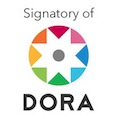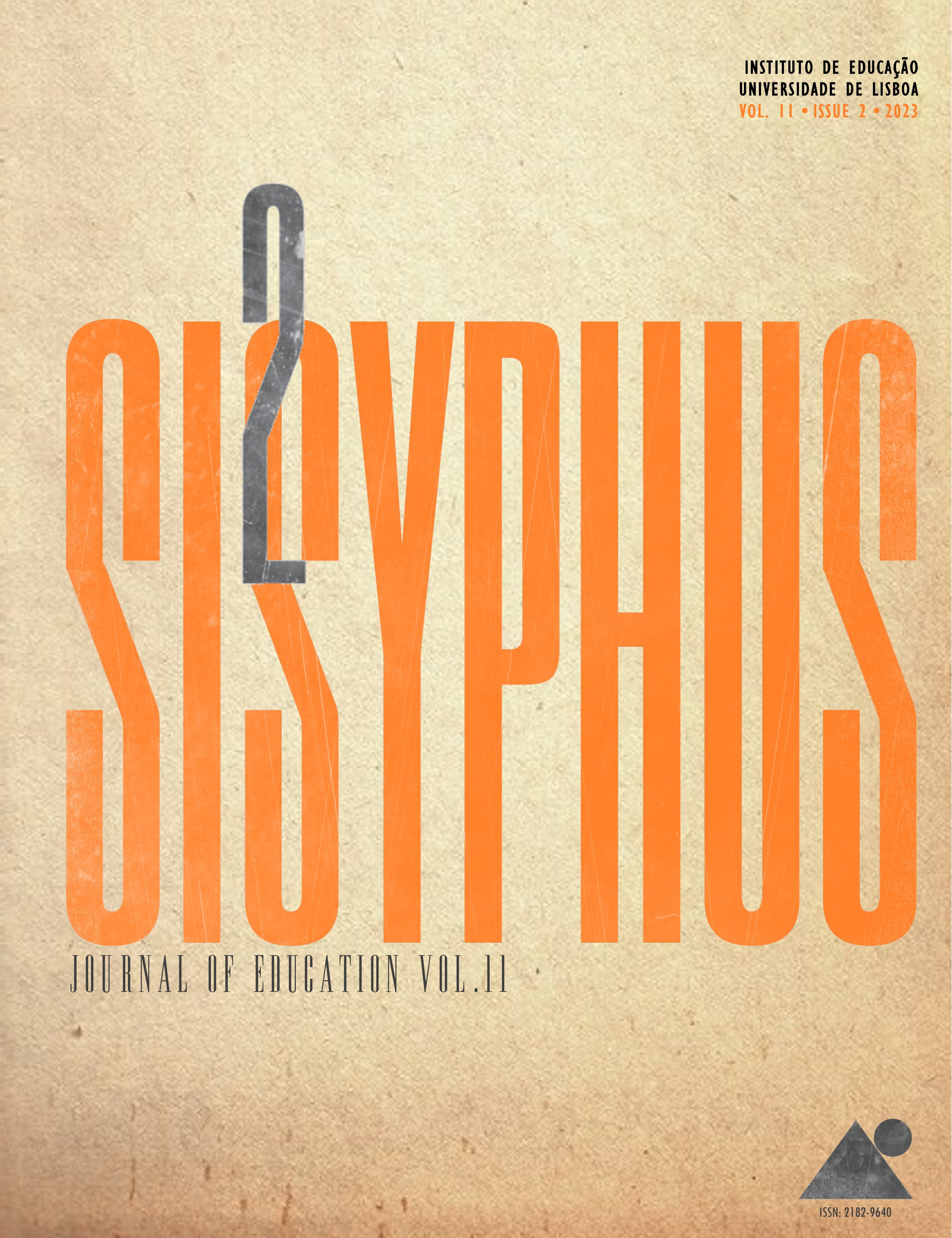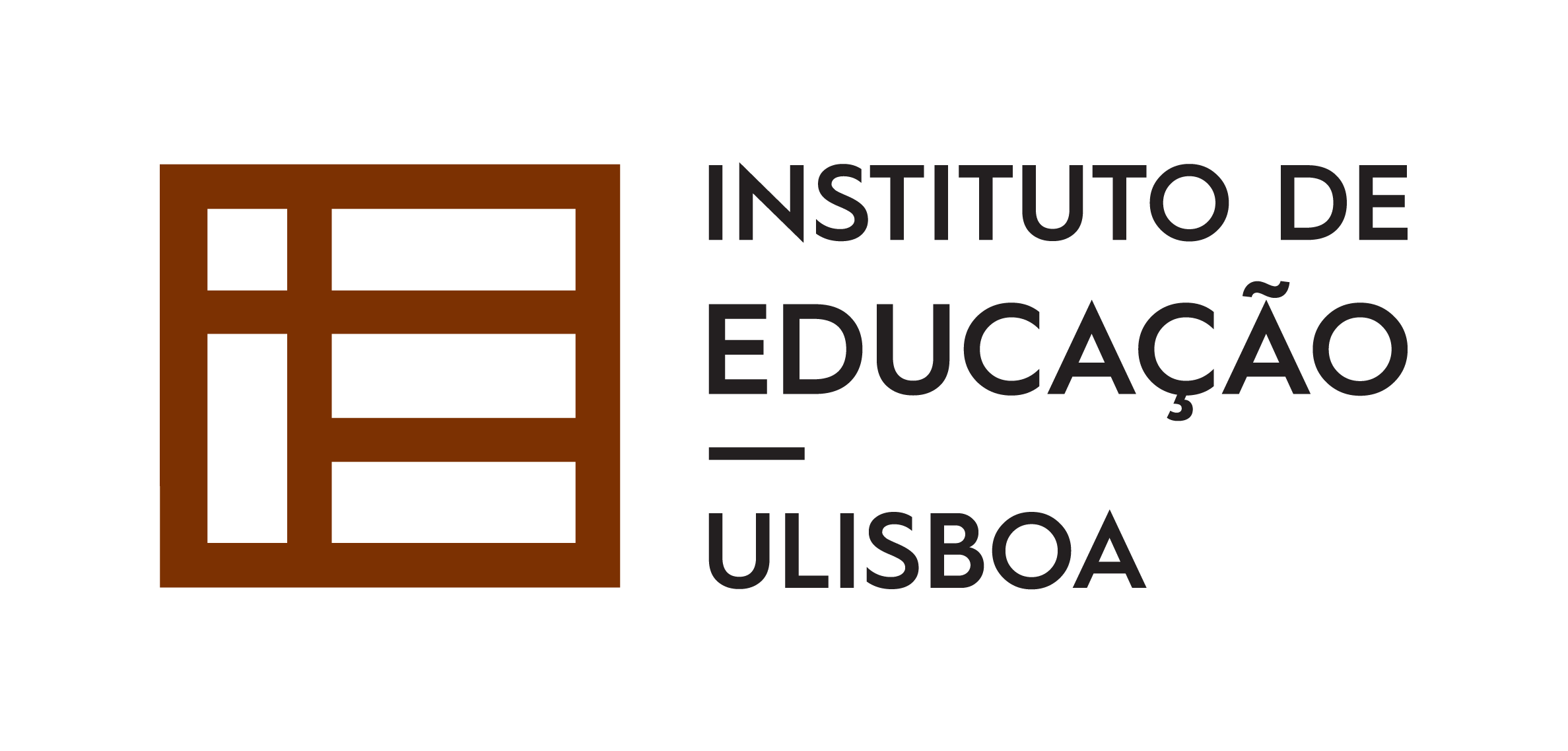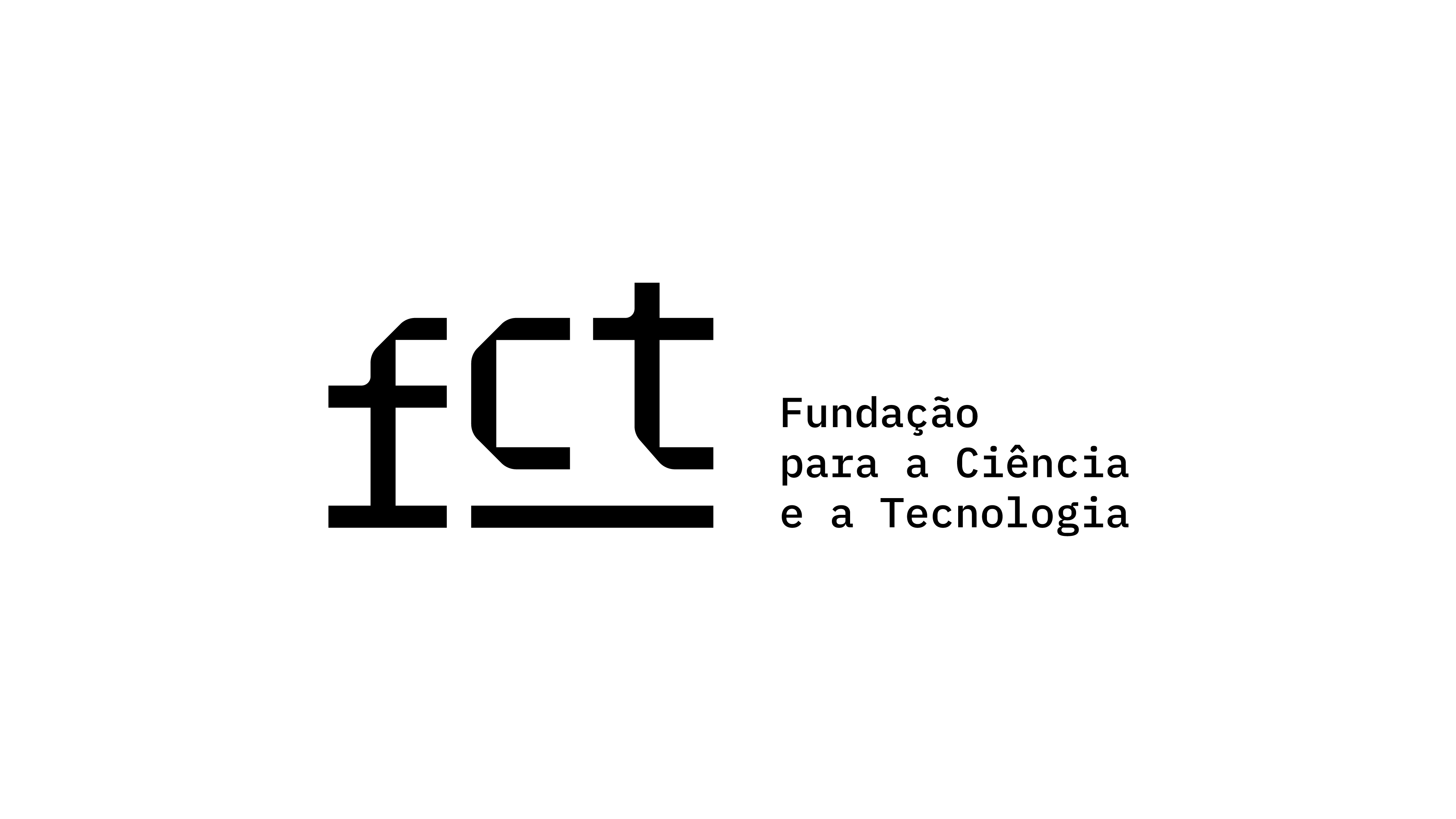Duolingo and IMVU in Spanish Language Teaching and Learning
Ludopedagogical and Interactive Practices
DOI:
https://doi.org/10.25749/sis.27986Keywords:
online games, teaching spanish, duolingo, IMVU, ludopedagogical practicesAbstract
The present research aimed to analyze the contributions of Duolingo and IMVU to the ludopedagogical practices in the teaching and learning of Spanish Language through the reports of students and a teacher from the first year of high school in a private institution. Twelve students and one Spanish language teacher participated in the research. For data collection, we used a sociodemographic questionnaire with five questions and a structured questionnaire with nine questions. The analyses were performed according to the proposed objective based on the reports of the students and the teacher. The results show that the students report that the use of Duolingo and IMVU contributes to the strengthening of the learning processes of writing and speaking in Spanish language classes. Therefore, the use of games and digital applications is considered an important tool for teaching Spanish language in high school.
Downloads
References
Adorno, T. W. (2008). Teoria estética. (Trad. Arthur Morão). Edições 70.
Alarcão, I. (2003). Professores reflexivos em uma escola reflexiva. Cortez.
Almeida, M. E. B. De, & Prado, M. E. B. B. (2005). Integração tecnológica, linguagem e representação. Tv Brasil. http://penta3.ufrgs.br/MEC-CicloAvan/integracao_midias/modulos/1_introdutorio/pdf/integracao_tecnologica.pdf
Alvarez, M. L. O. (2007). Crenças, motivações e expectativas de estudantes de um curso de formação Letras/Espanhol. In M. L. O. Alvarez & K. A. Silva (Orgs.), Linguística Aplicada: Múltiplos olhares (v. 1., pp. 191-231). Pontes.
Barcelos, A. M. F. (2006). Cognição de professores e estudantes: tendências recentes na pesquisa de crenças sobre ensino e aprendizagem de línguas. In A. M. F. Barcelos & M. H. Vieira Abrahão (Orgs.), Crenças e ensino de línguas: foco no professor, no estudante e na formação de professores (pp. 15-42). Pontes.
Bardin, L. (2011). Análise de conteúdo. Edições 70.
Bax, S. (2011). Normalisation Revisited: The effective use of technology in language education. International Journal of Computer-Assisted Language Learning and Teaching, 1(2), 1-15. https://doi.org/10.4018/ijcallt.2011040101
Busarello, R. I., Ulbricht, V. R., & Fadel, L. M. (2014). A gamificação e a sistemática de jogo: conceitos sobre a gamificação como recurso motivacional. In L. M. Fadel, V. R. Ulbricht, C. R. Batista & T. Vanzin (Orgs.), Gamificação na educação (pp. 11-37). Pimenta Cultural.
Cabral, A. C. S. F. (2018). Experiências lúdicas inseridas na experiência do usuário: Duolingo e sua forma de aproximação. (Dissertação de Mestrado em Tecnologias da Inteligência e Design Digital). Universidade Católica de São Paulo, São Paulo, Brasil.
Cabrera, W. B., & Salvi, R. F. (2005). A ludicidade no Ensino Médio: Aspirações de Pesquisa numa perspectiva construtivista. Atas do V Encontro Nacional de Pesquisa em Educação em Ciências. Bauru, Brasil. https://periodicos.ifsertao-pe.edu.br/ojs2/index.php/semiaridodevisu/article/view/477/426
Cahyani, A. (2016). Gamification approach to enhance students engagement in studying language course. MATEC Web of Conferences, 58 (03006), 1-6. https://doi.org/10.1051/matecconf/20165803006
Chou, Y.-K. (2016). Actionable Gamification: Beyond points, badges and Leaderboards. Revista Internacional de Organizaciones, 1(18), 137-144. https://doi.org/10.17345/rio18.137-144
Creswell, J. W. (2010). Projeto de pesquisa: métodos qualitativo, quantitativo e misto. (Tradução de Magda Lopes). (3ª Ed.). Artmed.
Dewaele, J. M., & Macintyre, P. (2022). Do Flow, Enjoyment and Anxiety emerge equally in English Foreign Language Classrooms as in other Foreign Language Classrooms?. Revista Brasileira de Linguística Aplicada, 22(1), 156-180. https://doi.org/10.1590/1984-6398202218487
Dohme, V. (2003). Atividade lúdicas na educação: o caminho de tijolos amarelos do aprendizado. Vozes.
Escolano, A. C. M., Marques, E. M., & Brito, R. (2010). Utilização de recursos didáticos facilitadores do processo ensino aprendizagem em Ciências e Biologia nas escolas públicas da cidade de Ilha Solteira/SP. In Anais do II Congresso Internacional de Educação. ISAPG. https://xdocz.com.br/doc/recursos-didaticos-ciencias-e-biologia-nas-escolas-publicas-96nwe5yv22n1
Feenberg, V. (1991). A Critical theory of technology. Nova York: Oxford University Press.
Feenberg, V. (2017). Entre a razão e a experiência: ensaios sobre tecnologia e modernidade. (Tradução de Eduardo Beira, Cristiano Cruz e Ricardo Neder). MIT Press.
Freire, P. (1996). Pedagogia da autonomia: saberes necessários à prática educativa. (6ª Ed.). Paz e Terra.
Freitas, E. S., & Salvi, R. F. (2007). A ludicidade e a aprendizagem significativa voltada para o ensino de geografia. Portal Educacional do Estado do Paraná. Curitiba, Brasil. http://www.diaadiaeducacao.pr.gov.br/portals/pde/arquivos/89-4.pdf?PHPSESSID=2009060908175561
Freitas, S., Lacerda, A., Calado, P., Lima, T., & Canedo, E. (2017). Gamification in education: A methodology to identify student's profile. 2017 IEEE Frontiers in Education Conference (FIE), Indianapolis, IN, USA, 2017, pp. 1-8. https://doi.org/10.1109/FIE.2017.8190499
Gee, J. P. (2005). Good video games and good learning. Phi Kappa Phi Forum, 85(2), 33-37. https://www.phikappaphi.org/docs/default-source/phi-kappa-phi-forum-documents/2005_summer.pdf?sfvrsn=878336e0_4
Gerova, G. (2019). Online Language-Learning Platform DUOLINGO from Different Perspectives. Department of German studies, Konstantin Preslavski University of Shumen, Bulgaria. https://www.researchgate.net/publication/339254041_Online_Language-Learning_Platform_DUOLINGO_from_Different_Perspectives_Gergana_Gerova_Lecturer_PhD_at_the_Department_of_German_studies
Haleem, A., Javaid, M., Qadri, M. A., & Suman, R. (2022). Understanding the role of digital technologies in education: A review. Sustainable Operations and Computers, 3(1), 275-285. https://doi.org/10.1016/j.susoc.2022.05.004
Han, B-C. (2017). Sociedade do cansaço. (Trad. Ênio Paulo Giachini). (2ª Ed.). Vozes.
Imbernón, F. (2010). Formação docente e profissional: formar-se para a mudança e a incerteza. (7ª Ed.). Cortez.
IMVU (2004). (Versão 5.6.1.50601003). [Software]. Redwood City, California, U.S.: Social Network. https://play.google.com/store/apps/details?id=com.imvu.mobilecordova
Jääskä, E., & Aaltonen, K. (2022). Teachers’ experiences of using game-based learning methods in project management higher education. Project Leadership and Society, 3(1), 1-12. https://doi.org/10.1016/j.plas.2022.100041
Jiang, X., Rollinson, J., Chen, H., Reuveni, B., Gustafson, E., Plonsky, L., & Pajak, B. (2021). How well does Duolingo teach speaking skills?. Duolingo Research Report DRR-21-02 June 1 1-12. https://duolingo-papers.s3.amazonaws.com/reports/duolingo-speaking-whitepaper.pdf
Jukes, I., McCain, T., & Crockett, L. (2010). Understanding the Digital Generation: teaching and learning in the new digital landscape. 21st Century Fluency Project/Corwin.
Lobo, A. S. M., & MAIA, L. C. G. (2015). O uso das TICs como ferramenta de ensino- aprendizagem no Ensino Superior. Caderno de Geografia, Belo Horizonte, 25(44), 16- 26. https://doi.org/10.5752/P.2318-2962.2015v25n44p16
Mattar, J. (2010). Games em educação: como os nativos digitais aprendem. Pearson Prentice Hall.
Moran, J. M. (1997). Como utilizar uma Internet na educação. Ciência da Informação, 26(2), 1-8. https://dx.doi.org/10.1590/S0100-19651997000200006
Moran, J. M, Massetto, M. T., & Behrens, (2012). Novas tecnologias e mediações pedagógicas. Papirus.
Munday, P. (2015). The case for using DUOLINGO as part of the language classroom experience. RIED. Revista Iberoamericana de Educación a Distancia, 19(1), 83-101. https://doi.org/10.5944/ried.19.1.14581
Nieto-Escamez, F., & Roldán-Tapia, M. (2021). Gamification as Online Teaching Strategy During COVID-19: A Mini-Review. Frontiers in Psychology, 12(1), 1-9. https://doi.org/10.3389/fpsyg.2021.648552
Oliveira, C., Moura, S. P., & Souza, E. R. (2015). TIC’s na educação: a utilização das tecnologias da informação e comunicação na aprendizagem do estudante. Pedagogia em ação, 7(1), 75-95. http://periodicos.pucminas.br/index.php/pedagogiacao/article/view/11019/8864
Oliveira, R. S. (2015). Linha do tempo da didática das línguas estrangeiras no Brasil. Non Plus, 4(7), 27-38. https://doi.org/10.11606/issn.2316-3976.v4i7p27-38
Piaget, J. (1976). Psicologia e Pedagogia. (Trad. Por Dirceu Accioly Lindoso e Rosa Maria Ribeiro da Silva). Forense Universitária.
Ritonga, M., Febriani, S. R., Kustati, M., Khaef, E., Ritonga, A. W., & Yasmar, R. (2022). Duolingo: An Arabic Speaking Skills’ Learning Platform for Andragogy Education. Education Research International, 1(1), 1-12. https://doi.org/10.1155/2022/7090752
Roztocki, N., Soja, P., & Weistroffer, H. R. (2019) The role of information and communication technologies in socioeconomic development: towards a multi-dimensional framework. Information Technology for Development, 25(2), 171-183- https://doi.org/10.1080/02681102.2019.1596654
Seven, M. A. (2020). Motivation in language learning and teaching. African Educational Research Journal, special issue 8(2), S62-S71. https://files.eric.ed.gov/fulltext/EJ1274645.pdf
Smale, W. T., Hutcheson, R., & Russo, C. J. (2021). Cell Phones, Student Rights, and School Safety: Finding the Right Balance. Canadian Journal of Educational Administration and Policy, 195, 49-64. https://journalhosting.ucalgary.ca/index.php/cjeap/article/view/70205
Ventouris, A., Panourgia, C., & Hodge, S. (2021). Teachers’ perceptions of the impact of technology on children and young people's emotions and behaviours. International Journal of Educational Research, 2, 100081. https://doi.org/10.1016/j.ijedro.2021.100081
Vergara, S. C. (2017). Projetos e relatórios de pesquisa em administração. (16ª Ed.). Atlas.
Vianna, Y., Vianna, M., Medina, B., & Tanaka, S.(2013). Gamification, Inc.. Como reinventar empresas a partir de jogos. MJV Press.
Vygotsky, L. S. (2007). A formação social da mente. Fontes.
Wahid, S. Z., & Wahid, B. (2018). The Effectiveness of Gamification in Improving Student Perform. Kolokium Pembentangan Kertas Penyelidikan Dan Inovasi TVET Peringkat Politeknik dan Kolej Komuniti Zon Utara. https://www.researchgate.net/publication/332698117_The_Effectiveness_of_Gamification_in_Improving_Student_Performance_for_Programming_Lesson
Wichadee, S., & Pattanapichet, F. (2018). Enhancement of performance and motivation through application of digital games in an english language class. The Journal of Teaching English with Technology - TEwT, 18(1), 77-92. https://tewtjournal.org/download/6-enhancement-of-performance-and-motivation%c2%ac-through-application-of-digital-games-in-an-english-language-class-by-saovapa-wichadee-and-fasawang-pattanapichet/
Zichermann, G., & Cunningham, C. (2011). Gamification by Design: Implementing Game Mechanics in Web and Mobile Apps. O’Reilly Media, Inc.
Zuin, A. A. S., & Zuin, V. G. (2017). Lembrar para elaborar: reflexões sobre a alfabetização crítica da mídia digital. Pro-Posições, Campinas, 28(1), 213-234. http://dx.doi.org/10.1590/1980-6248-2016-0055
Downloads
Published
Issue
Section
License
Copyright (c) 2023 Sisyphus — Journal of Education

This work is licensed under a Creative Commons Attribution-NonCommercial 4.0 International License.
Copyright (c) belongs to Sisyphus - Journal of Education. However, we encourage issued articles to be published elsewhere, provided that Sisyphus authorization is asked for and that authors integrate our original source citation and a link to our website.
Author Self-Archiving Policy
Author(s) are permitted to self-archive the final published version in institutional or thematic repositories, and in their personal or institutional websites.
DORA Signer
The Instituto de Educação da Universidade de Lisboa, Sisyphus' Publisher, is a San Francisco Declaration on Research Assessment signer.






